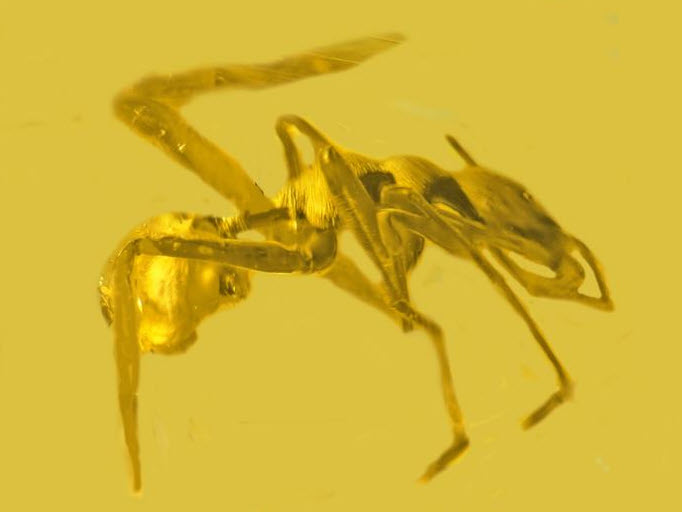Resin Fossil of Ant-Mimicking Spider Discovered
Posted on March 27, 2024

Researchers have discovered a resin fossil of an ant-mimicking spider. The fossil was found in Columbia where there are no known living ant-mimicking spiders.
The fossil was preserved in copal, which is a less mature form of fossilized resin than amber. Copal can be up to 3 million years old but the spider was not dated because the sample was too small to age-test without a risk of damaging the fossil.
Paleobiologist George Poinar Jr. explains some of the benefits a spider disguising itself as an ant has. Poinar says, "Ants are particularly good creatures for spiders to pretend to be – many animals find ants distasteful or dangerous to eatAnts are aggressive in their own defense – they have a strong bite as well as a stinging venom, and they can call in dozens of nestmates as allies. Spiders, meanwhile, have no chemical defenses and are loners, which makes them vulnerable to being hunted by larger spiders, wasps and birds – predators that would rather avoid ants. So if a spider can be like an ant, it’s more likely to be unbothered."
Poinar also says, "It is a challenge for spiders to accomplish this magical transformation to ants. Ants have six legs and two long antennae, while spiders have eight legs and no antennae."
Poinar named the new ant-mimic spider species, Myrmarachne colombiana.
The research was published in the journal, Historical Biology.
Image: George Poinar Jr.
